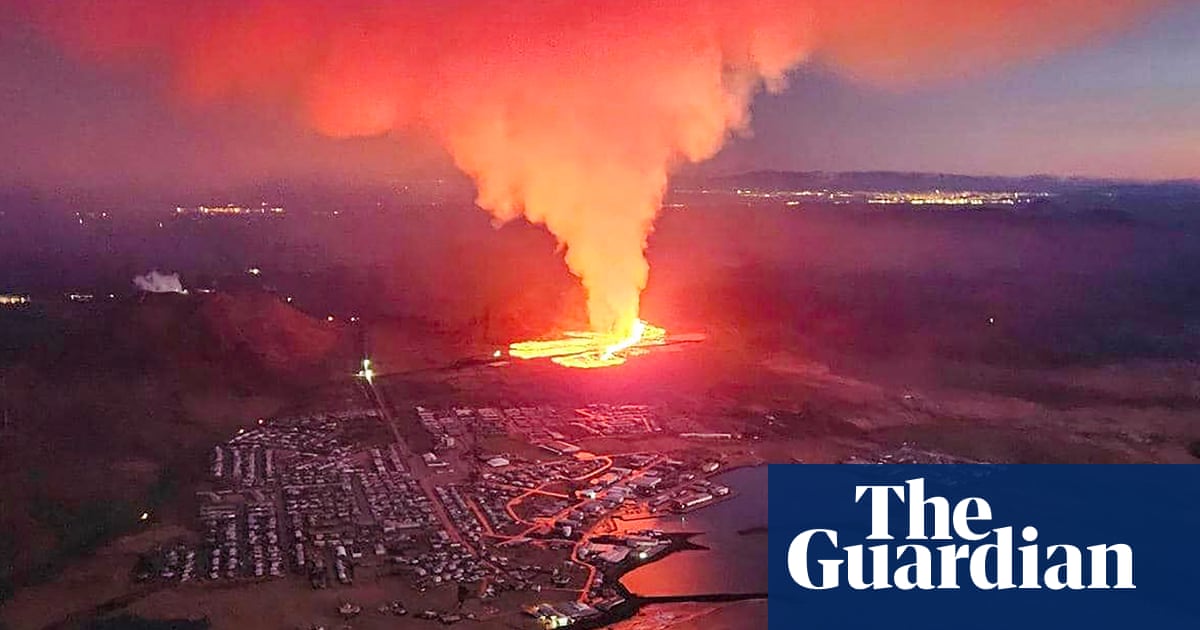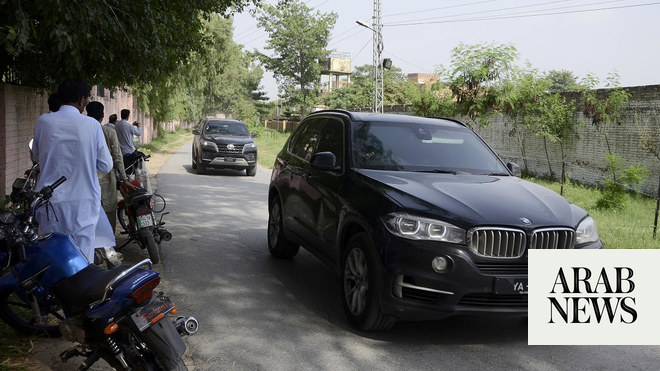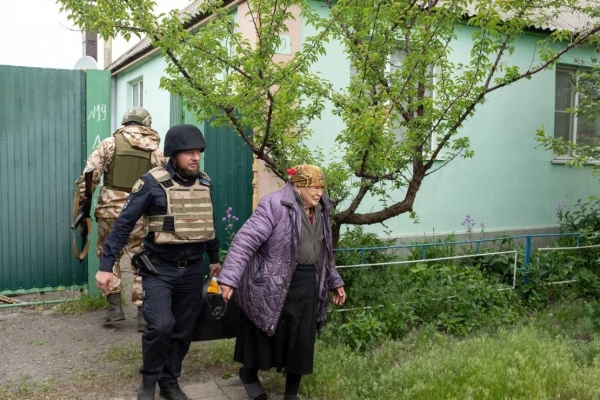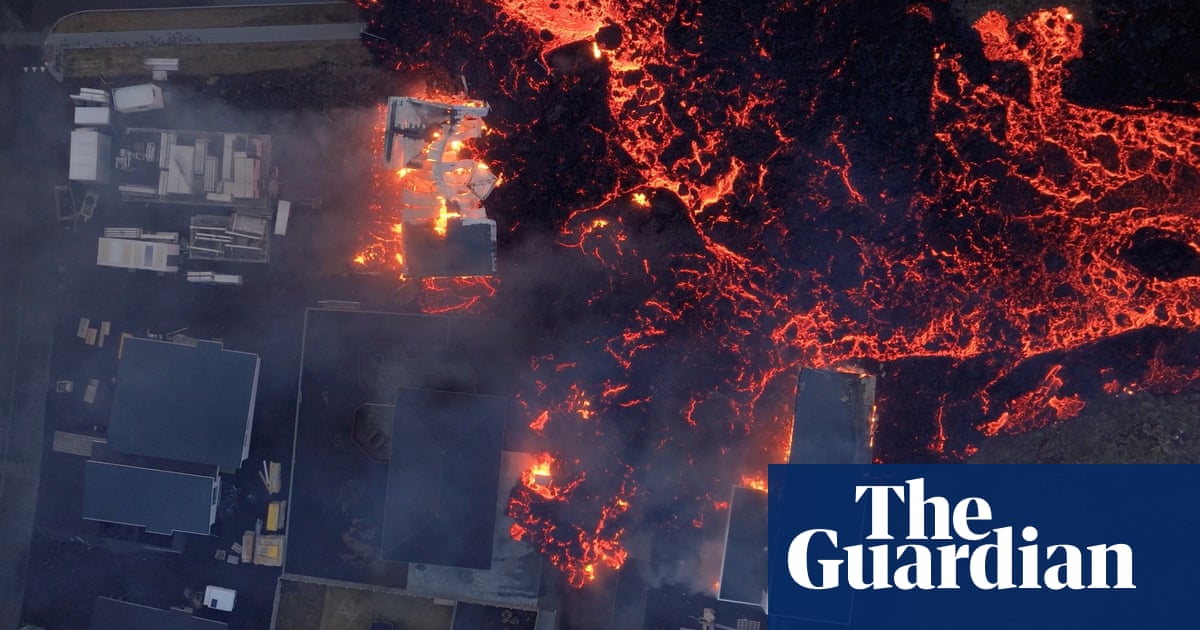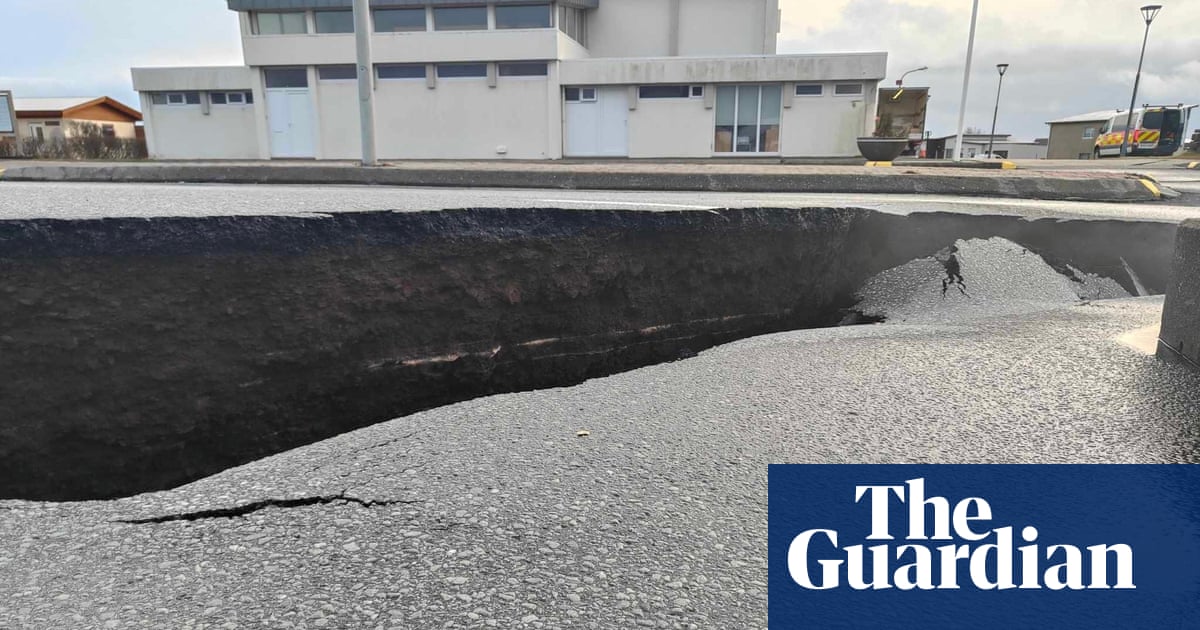
Some of the more than 3,000 residents evacuated from an Icelandic fishing town have been allowed to return briefly to their homes to collect pets and essential belongings, as experts warned that a volcano could erupt within days or even hours.
One resident from each household in one district of Grindavík was permitted to enter their home for five minutes on Sunday in what Iceland’s civil defence force called a “planned and controlled operation under the orders of the police”.
The residents were driven in emergency vehicles and accompanied by civil defence workers, and the force appealed to other residents “not to drive towards Grindavík at all”. It added: “This is a responsibility and not a trivial decision.”
A coastguard helicopter circled above the Þórkátlustað district of the town ready to airlift residents out if the volcano erupted while they were collecting pets and essential belongings, a spokesperson told the public broadcaster RÚV.
The town, about 25 miles (40km) from the capital, Reykjavik, on Iceland’s south-western coast, was evacuated early on Saturday after magma shifting under the earth’s crust caused hundreds of earthquakes, likely precursors to an eruption.
Danielle Rodriguez, an American basketball professional who plays and coaches in Grindavík, described the emergency evacuation on X, saying her team’s Saturday practice had been interrupted by “constant four- and five-magnitude earthquakes”.
While she and her girlfriend were driving out of the town, one of their cars broke down, she said. They pulled over to discuss where to leave it, she said – at which point she “felt the most scared for my life I have ever been”,
The ground “started shaking so much I had to grab a hold of the car and, honest to God, for a good 30 seconds I felt as though the ground was going to crack open and take us both”, Rodriguez said. The pair eventually left on a minor road because “on our second attempt on the main road, a huge bump appeared”.
Víðir Reynisson, the head of the civil defence force, told reporters on Sunday that about 30 residents had been allowed to return for a short while, and it would clear on Monday, after a further risk assessment, whether any more could follow.
A Grindavík resident who was allowed back in, Sólveig Þorbergsdóttir, told the broadcaster RÚV that her house was fine but her neighbours’ appeared badly damaged. “I couldn’t save all I wanted to,” she said. “I saved what I saw around me. Pictures of the grandchildren, the wedding dress, pictures of myself when I was little.”
Iceland’s meteorological office said seismic activity had decreased somewhat on Sunday afternoon, but experts said that should not be interpreted as meaning an eruption was any less likely either on or just off the Reykjanes peninsula, a volcanic and seismic hotspot.
A tunnel of magma, or molten rock, extending north-east across Grindavík and some 6 miles farther inland, was estimated early on Sunday to be at a depth of less than 800 metres, compared with 1,500 metres earlier in the weekend, the office said.
A meeting on Sunday between state meteorologists, civil defence officials and experts from the University of Iceland heard that seismic activity had continued overnight and during the morning, with about 1,000 earthquakes recorded since midnight.
Most of the quakes were recorded at a depth of between 3,000 and 5,000 metres, with activity concentrated north and south of Grindavík. Magnús Tumi Guðmundsson, a professor of geophysics, told RÚV the chances of an eruption were considerable.
The seismic activity “started off really fast and thankfully has slowed down a bit”, he said. “However, that does not tell us anything about what happens next.” The eruption could happen near the town or – less likely – out at sea, he said.
Grindavík is near the Blue Lagoon geothermal spa resort, a popular tourist destination, which closed as a precaution earlier this week.
The quakes and ground lift caused by the magma intrusion have already caused damage to roads and buildings in Grindavík and the surrounding area, and a large crack has torn up the greens on the town’s golf course.
Iceland, which has 33 active volcanic systems, has declared a state of emergency. Emergency shelters and help centres have opened in several nearby towns, but most Grindavík residents are staying with friends or relatives.
The meteorological office’s volcanic hazards coordinator, Sara Barsotti, said late on Saturday that experts were surprised by the amount of lava and the speed at which it was accumulating, describing the activity as “an unprecedented event”.
There have been three eruptions on the Reykjanes peninsula in recent years near the Fagradalsfjall volcano, in March 2021, August 2022 and July 2023, all far from any infrastructure or populated areas. Before 2021, the peninsula had been dormant for eight centuries.





